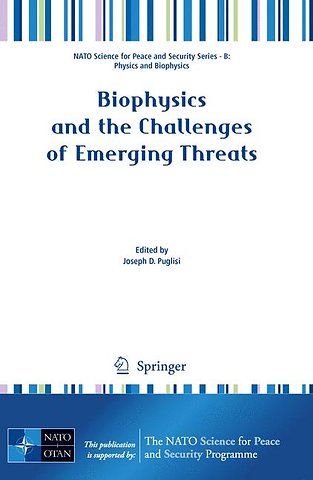Biophysics and the Challenges of Emerging Threats
Paperback Engels 2009 2009e druk 9789048123674Samenvatting
Single-molecule techniques eliminate ensemble averaging, thus revealing transient or rare species in heterogeneous systems [1–3]. These approaches have been employed to probe myriad biological phenomena, including protein and RNA folding [4–6], enzyme kinetics [7, 8], and even protein biosynthesis [1, 9, 10]. In particular, immobilization-based fluorescence te- niques such as total internal reflection fluorescence microscopy (TIRF-M) have recently allowed for the observation of multiple events on the millis- onds to seconds timescale [11–13]. Single-molecule fluorescence methods are challenged by the instability of single fluorophores. The organic fluorophores commonly employed in single-molecule studies of biological systems display fast photobleaching, intensity fluctuations on the millisecond timescale (blinking), or both. These phenomena limit observation time and complicate the interpretation of fl- rescence fluctuations [14, 15]. Molecular oxygen (O) modulates dye stability. Triplet O efficiently 2 2 quenches dye triplet states responsible for blinking. This results in the for- tion of singlet oxygen [16–18]. Singlet O reacts efficiently with organic dyes, 2 amino acids, and nucleobases [19, 20]. Oxidized dyes are no longer fluor- cent; oxidative damage impairs the folding and function of biomolecules. In the presence of saturating dissolved O , blinking of fluorescent dyes is sup- 2 pressed, but oxidative damage to dyes and biomolecules is rapid. Enzymatic O -scavenging systems are commonly employed to ameliorate dye instability. 2 Small molecules are often employed to suppress blinking at low O levels.
Specificaties
Lezersrecensies
Inhoudsopgave
Rubrieken
- advisering
- algemeen management
- coaching en trainen
- communicatie en media
- economie
- financieel management
- inkoop en logistiek
- internet en social media
- it-management / ict
- juridisch
- leiderschap
- marketing
- mens en maatschappij
- non-profit
- ondernemen
- organisatiekunde
- personal finance
- personeelsmanagement
- persoonlijke effectiviteit
- projectmanagement
- psychologie
- reclame en verkoop
- strategisch management
- verandermanagement
- werk en loopbaan

